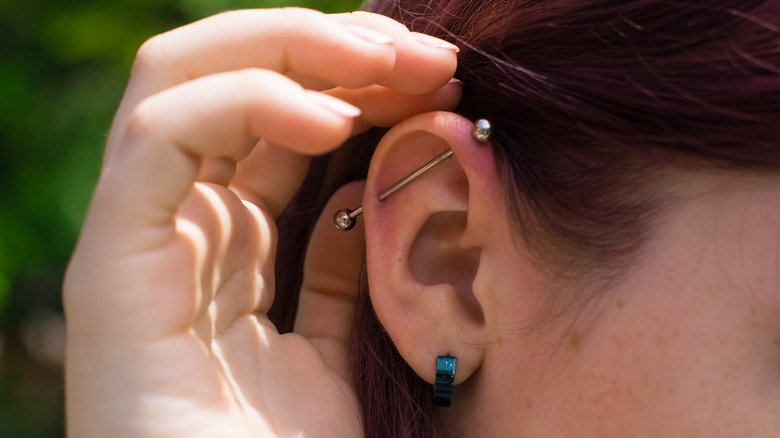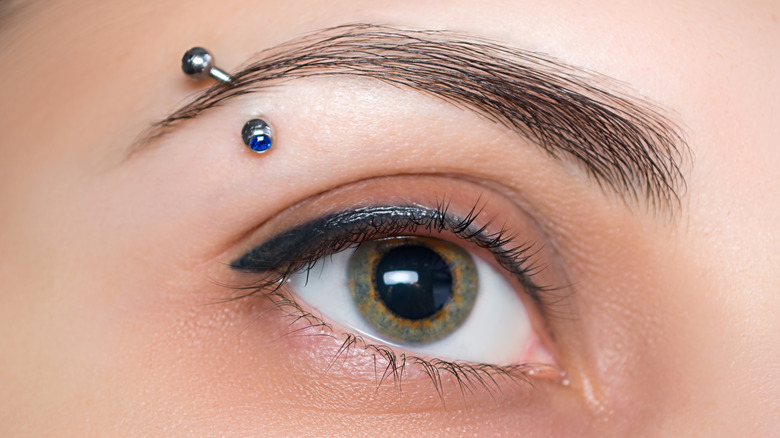Here's What To Pierce If You Don't Like Pain
There's a lot to consider when you get a piercing. You have to be mentally ready, and you have to be financially ready, too. Piercings can cost a lot of money, and then there's the ever-fun task of finding the perfect jewelry to adorn the new additions to your body. If you've gotten past what a piercing does to your body and want to get one, you finally have to consider your pain tolerance. Can you handle the pain of a piercing? Can you handle a septril piercing? A hip piercing? How about a tongue piercing?
Your pain tolerance is pretty much the factor you need to consider the most. All piercings can hurt, but some can hurt far worse than others simply because of where they're located on your body. According to Medicine Net, one example of this is the pain of a cartilage piercing on your ear. They describe cartilage as "thick and hard," and it's because of these qualities that it's harder to pierce though. Traditional earlobe piercings, then, are much less painful than cartilage piercings, but that doesn't necessarily mean they're the least painful piercing location, either.
These are a few piercings you should avoid if you have a low pain tolerance
If you don't handle pain well, certain piercings will be better for you than others. According to Refinery29, there are also a few piercing types you want to avoid altogether if you have a low pain tolerance. These include your cartilage, but they also include your nipples and your genitals. The nipples and genitals are both incredibly sensitive areas, and while piercing them has become increasingly common, you may want to save those for people who can handle the pain a little better.
Getting both nipples pierced at the same time is even more of a recipe for disaster. Refinery29 explains that oftentimes "people notice their tolerance lower by the second round because their bodies are already well-aware of being in pain from the previous puncture." Because of this, the second nipple will hurt far worse than the first one. Pain is relative and so are piercings, so this may not be the case with you, but typically, the second will hurt worse. This logic applies to getting any two piercings at the same time, regardless of if they're nipples or not.
These are a few piercings you should actually get if you have a low pain tolerance
Now that you know a few specific piercings to avoid if you have a low pain tolerance, it's time to look at a few that you should be able to handle just fine. While you should avoid cartilage piercings, traditional earlobe piercings are much less painful. According to Healthline, ear tissue even heals quickly, so you won't be in much pain and you won't have a long recovery time.
After earlobe piercings, belly button piercings are the least painful. "That's because the thick tissue left behind from when your umbilical cord was removed is flesh and not very nerve dense," Healthline explains. "You may feel a lot of pressure when the needle goes through because the tissue is hard to poke through, but the pain goes away quickly." The downside is that they can take up to a full year to heal.
Other less painful options include tongue piercings and eyebrow piercings. The former is probably surprising, but it's balanced out by their ability to become infected rather easily due to the constant function of the mouth. Eyebrow piercings on the other hand strike the border between painful and painless, per Healthline. They're riskier, but some people report not experiencing pain from them. Pro tip: If you're going to get an eyebrow piercing, avoid the middle of the brow. The supraorbital nerve is located there and can make your piercing much more painful.


